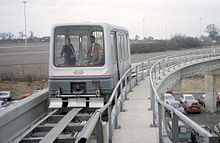Study material for SSE/JE examination by RRB on Electrical Engineering Part II
Utilization of Electrical Energy
The most important advantage is the simplicity in transmission, transformation, conversion into different wave forms, utilisation for any application to help mankind resulted in its very quick spread and today it is impossible to imagine life sustainability without it. When we study its utility, it is important to keep these aspects in mind. Electrical energy can be converted into any other form of energy. Conversion to heat, illumination and chemical were discussed in Part I. Now we discuss its conversion into mechanical energy.
He was Tesla, who first demonstrated three phase induction motor in the year 1987. A three phase supply is fed to stator winding which is uniformly distributed through its periphery forming number of poles results in producing a rotating magnetic field of constant value but rotating at a constant speed called synchronous speed Ns = 120*(frequency in cps)/No. of poles in the air gap between rotor and stator. When it sweeps past the rotor surface and cuts the rotor conductor, it induces emf in the rotor bars which are short circuited at the end through an end-ring. The induction of emf, its direction and resultant force are the result of Farday’s, Lenz’s and Fleming’s RHR/LHR. A short circuit current flows through the rotor bars which experience a force and starts rotating in the direction of rotating field to neutralize the cause which produced emf in the rotor bar. By doing so, rotor tries to pick up the speed near to Ns and rotor current reduces (ideally to zero) to the level necessary to meet the demand of losses and mechanical load on the shaft. This speed is called Nr and that derives a new term called Slip between synchronous speed of flux and mechanical rotation of rotor.
Slip (s) = [(Ns – Nr )*100]/Ns
It is the slip which defines all parameter in the rotor such as torque, rotor current frequency, rotor speed.
This is the basic principle of Induction motor and called so as it works on the principle of induction similar to transformer where secondary is fixed whereas in the motor, it is allowed to rotate freely. Following types of motor were developed on this principle
- Synchronous Motor: The rotor speed is equal to synchronous speed but when slip is zero, the torque is also zero, therefore, external source is used to drive the rotor to synchronous speed. The initial development of this motor was for power factor compensation but also used as synchronous traction motor. There is further development to provide permanent magnet in the rotor and thus development permanent magnet synchronous motor with reduced size and increased efficiency.
- Asynchronous Motor: Induction motor is also called asynchronous motor as rotor speed is not fully synchronized. This the motor widely used for fixed speed application. With the development variable voltage variable frequency drives, it could be possible to get need base variable speed thus saving on energy. Now, induction motor is also used extensively for applications requiring high starting torque such as traction, hoist, crane etc. Earlier, slip-rings were used to insert external resistance for using induction motor for hoist application, now it is no more.
- Compensated and repulsion motors are used for specific application in lower wattage range.
- Single Phase AC motor: Single phase motors are widely used for household and industrial for fractional horse power application. Minimum two phases are required to produce rotating field and starting torque. For this, single phase is split into two by using a starting capacitor and additional auxiliary winding. There are many combinations of this motor for specific applications.
- Liner Induction Motor: Linear induction motor is one in which stator is split open which result in linear motion of the rotor. These
motors have opened a scope for research and application in the field of contact less high speed and energy efficient motion. The world’s first commercial automated maglev system was a low speed maglev shuttle that ran from the airport terminal of Birmingham International Airport to the nearby Birmingham International railway station between 1984–1995. In India, Dr. Somnath Mahindra at BHU/Varanasi is working in this project with a working model exisitng at IRIEEN/Nasik.
You may also like:
- Where to begin to understand Electrical Engineering?
- Why IR passenger traffic heading south?
- Indian Railway Context – Sanding to improve adhesion
- Study material for SSE/JE examination by RRB on Electrical Engineering…
- Why Faraday’s research is revolutionary to start the era of…
- How Resistance is important in understanding Electricity?

hello;sir this is pavan i wnt to know about the complete details about rrb je/sse give me some sujjestion and reference books names or pdfs to my mail,thank you.
Visit the website and you will find answer to all your quarries of job profile, RRB examination, previous year papers and sample papers, syllabus etc.
Is there any electronics subject material for railways available ????? Or suggest me agood book for basic study of electronics electrical computer subject for railway sse je??
There can not be a good book specifically for SSE/JE for RRB jobs. The syllabus is very clear and whatever you have studied in your Engineering during the first two years shall be sufficient. No examination is held exclusively for electronics/electrical/computer but all branches together. Hence, you have to prepare for all the branches of Engineering. If you go through the trend of examination in the past, sample paper attached, you will find and can make up your mind, what you have prepare.